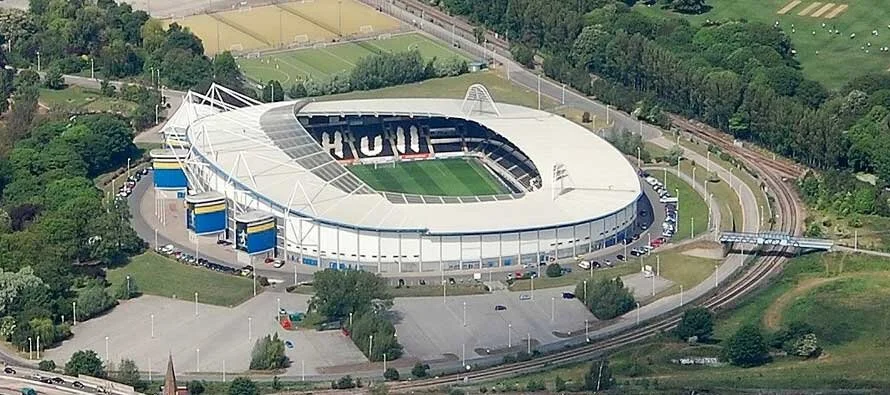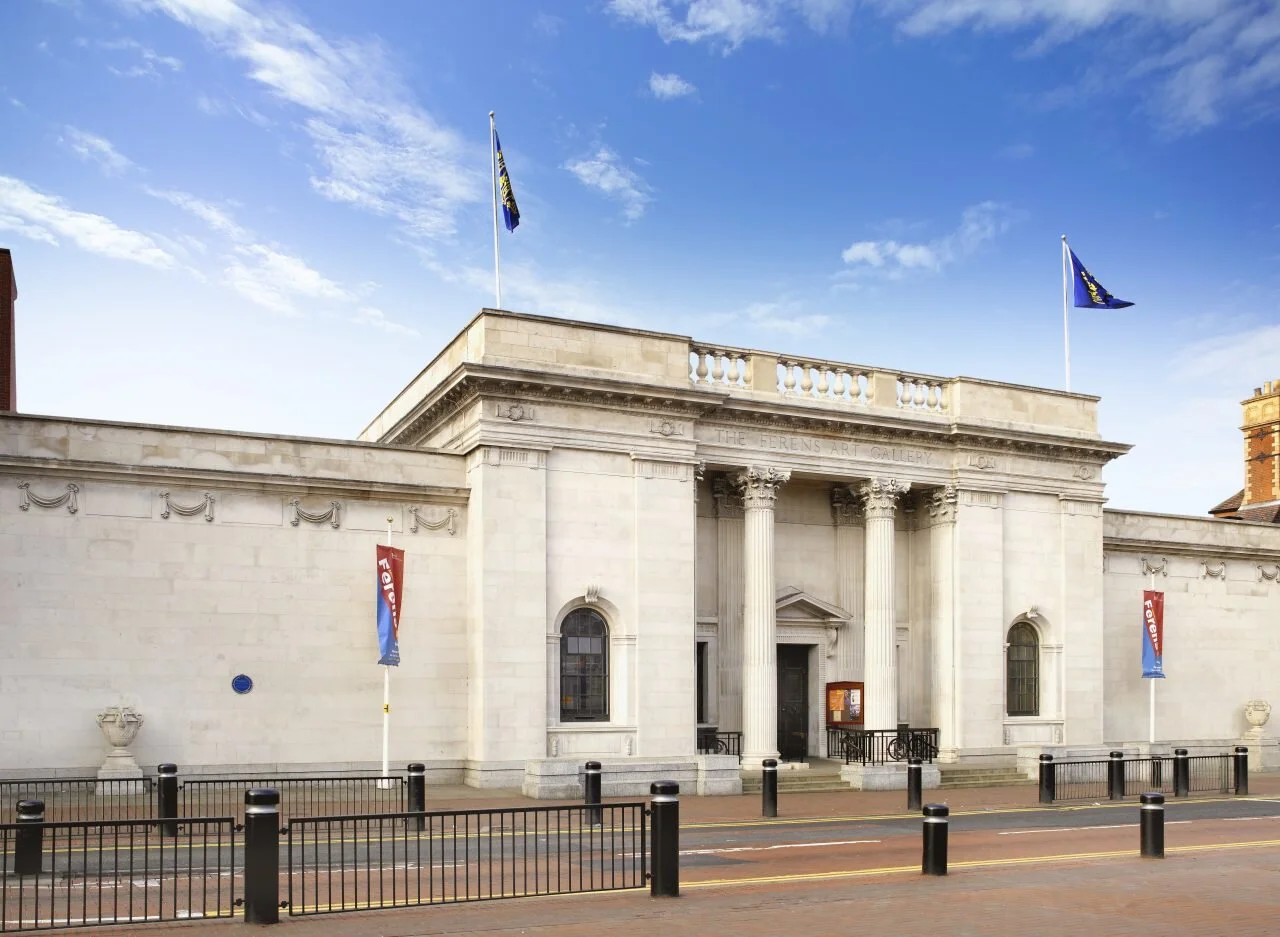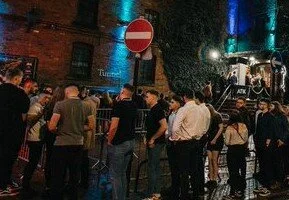
Hull
KCOM. Home of Hull City
Sreetlife Museum
Ferrens Art Gallery
Arctic Corsair
Nightlife
The Deep
CITY
Introduction:
Or Kingston-upon-Hull as it is officially known, is a city in the East Riding of Yorkshire. It sits on the River Hull and lies twenty five miles from the North Sea on the north shore of the River Humber. The current population is 256.406.
Brief History:
In 1293 King Edward 1 bought the land for and in 1299 founded the borough of Kingston upon Hull, which already had a port.
In the Middle Ages the port exported lead, grain and wool and was busily importing goods from Scandinavia and the other Baltic states.
Trade declined in the 16th and 17th centuries but the city was militarily of interest to both Royalists and Parliamentarians in the Civil War, the latter side being those the population was loyal to.
The Industrial Revolution and major agricultural developments in Yorkshire and East Midlands saw the rapid growth again as a port and new docks were built from 1778 and next 150 years. Hull grew rapidly beyond its mediaeval core and imports and exports flourished.
A local merchant, William Wilberforce, became MP for the city in 1780 and in 1807 he introduced a bill in parliament to abolish slavery in the British Empire and as an institution in 1833.
Fishing took off in the 1840s after major fish stocks were found in the North Sea and at the end of the century trawling was introduced which meant the fleet could get to Iceland and farther afield.
Trade and industry expanded with the arrival of the railway and its prosperity and building of civic buildings saw Hull become a city in 1897.
Again, decline set in during the 1920s and 1930s although a university was founded in 1927 and now has 18000 students a year.
The Second World War saw the city devastated in 1941, due to its strategic importance, with only London suffering more.
Post war redevelopment was slow and the docks declined but were helped by the introduction of container ships and major ferry routes. The cod wars with Iceland and European quotas saw the fishing industry shrink but the port was still a major importer of timber.
Between 1973 and 1981 the Humber suspension was built and officially opened by the Queen.
Devastating floods in 2007 could not take all the excitement away from Hull City gaining Premiership Football status in 2008 and things got better with forecast prosperity after the city was named UK City of Culture for 2017.
Things to Do:
Although handed a bad hand in WW2 the city is not now lacking in places of interest to visitors.
Streetlife Museum:
Located in the Museum Quarter off of High Street this museum is for all the family. There is free entry and a chance to discover 200 years of transport history. There is a 1940s street and tram ride. There are also galleries featuring the Bicycle, Motor Car and Railway.
The museum is open until 5pm Monday to Saturday and 4.30pm on Sunday.
Arctic Corsair:
Is the last of Hulls “side winder” fishing boats and is a veteran of the cod wars and was rammed by an Icelandic gun boat. She was retired from fishing in 1986 and opened to the public in 1999 and attracts 20000 visitors a year.
Entry is free but is run as a guided tour with a ten minute introduction film on Life at Sea. Not suitable for children under six and suitable shoes should be worn.
Tickets are obtainable at Museum Quarter reception area.
Museum of Hull and East Riding:
This museum which covers 235 million years of Natural History and Archaeology is one of the finest in the United Kingdom. Interesting artefacts from the Iron Age, Bronze Age through to Middle Ages are on display. There is also a Roman bath house and nice mosaics.
Entrance is free and the museum is open until 5pm Monday to Saturday and 4.30pm on Sunday.
There is a gift shop and is located in the Museum Quarter.
Wilberforce House:
Is the home of William Wilberforce the MP for Hull who was responsible for the abolition of slavery. Interesting items on display include his journal, plantation records and personal documents and stories.
There are also a number of fascinating galleries to peruse.
The museum is located in the museum quarter.
Ferens Art Gallery:
This gallery is a treat for art lovers. Opened in 1927 it has a very good collection of paintings and sculpture with pieces By Frans Hals, Canaletto and David Hockney. It specialises in Old Dutch and Flemish masters through to contemporary British art.
Located in Queen Victoria Square the museum also possesses a gift shop and café. Opening times are until 5pm Monday to Saturday and 4.30pm on Sundays. Entry is free.
The Deep:
Hull can boast one of the best aquariums in the world. There are more than 3500 fish which include sharks and rays.
Displays show tropical and ice conditions and a lift takes you 10 metres vertically down to the deepest viewing tunnel in Europe. There is now a new £750,000 penguin exhibit and you can see feeding of the animals and a discovery section.
The Deep is located on Tower Street, HU1 4DP, which is on the east bank of the River Hull where it meets the River Humber.
The Deep is open until 6pm daily and there is an excellent restaurant and a very good store.
There are entrance fees and a visit to www.thedeep.co.uk will provide further information.
Also Worth Visiting:
Dinostar, Hull Old Town and East Park are worth a look at. Holy Trinity, a 13th century mediaeval Church, is said to be the largest parish church in England.
Sport:
As well as Premiership football, Hull has two major Rugby League clubs, Hull and Hull Kingston Rovers.
Night Life:
Said to be amongst the top ten cities in England for night life, fun nights out can be found at eight clubs including Pozition, Asylum, Spiders and Sugar Mill. Details and locations of all clubs can be found in www.hullvibe.co.uk .
Bars and pubs are also in abundance and Revolution Bar, Lizard Lounge, Sleepers and Ye Olde White Hart amongst them. Again details available at www.hullvibe.co.uk .
A vast range of other pubs are found throughout the city, suburbs and countryside.
There is a good range of theatres covering all genres of productions.
Hull New Theatre, built in 1939 and located in Kingston Square, puts on musicals, drama, opera and ballet.
Truck Theatre, in Spring Street, presents high quality drama which it also takes on tour.
City Hall, which sits in Queen Victoria Square, presents rock, pop and comedy gigs.
Donald Roy Theatre, is one of the best university theatres in the UK.
Hull Arena, in Kingston Street, houses a live music centre and ice rink.
Cinemas are run by four organisations- Odeon, Cineworld, Vue and Reel.
Details of what’s on and locations can be found on their individual web sites.
Eating Out:
In Hull, with over 400 eating places to choose from then all tastes are catered for.
British Fish and Chips, and Pies, through to Italian, Chinese, Indian and other world cuisines. Cafes, Pubs and Restaurants throughout the city, suburbs and nearby countryside cover all needs.
Shopping:
In line with most other large cities, Hull doesn’t disappoint as a regional shopping centre. Major, national chains and more local retailers can be found in St. Stephen’s Mall, Prospect Centre and Whitefriargate.
For interesting merchandise a visit to Hepworth Arcade, Fruitmarket and Indoor Market will satisfy.
Further afield Beverly and Hornsea are worth a visit.
Accommodation:
The range and choice of hotels and other accommodation may be limited but the value is generally good.
Standard national chains, guest houses and pubs offer a good mix and are scattered throughout the Hull urban area and the East Riding.
Transport:
The construction of the Humber Bridge brought Hull within reach of all the UK after being isolated on the north side of the river.
Roads:
The M62 which starts in Liverpool passes Manchester, then over the Pennines and south of Bradford and Leeds. It then heads towards Hull changing to the A63 when entering the city.
To head to London and the South the use of the Humber Bridge is recommended, then west along the M180. Once the M18 is reached take the left junction and join the M1 at Sheffield/Rotherham. There is also the alternative of using the A1M to London via Grantham, Peterborough and Cambridge.
For the North East of England and Scotland take the M62 to the A1M and take the northern junction route.
Local roads connect Hull to York and Bridlington and Yorkshire coast.
Buses:
A comprehensive bus system operates in Hull run by Stagecoach and East Yorkshire Motor Services.
Hull Paragon Interchange, adjacent St. Stephen Mall, is a hub where train and bus services connect and many of the bus routes in Hull pass through this hub.
From the city centre, Grimsby and South Lincolnshire and the East Riding of Yorkshire can be reached. There is also a bus route to Humberside Airport.
For further information telephone Stagecoach on 01482 222333 and East Yorks on 01482 592929.
Stagecoach also operate a Park and Ride route from Priory Park to the city centre via KC Stadium and major retail centres.
National Coach services also run from the city to the rest of the country.
Railway:
Hull Paragon Interchange is the city centre station for Hull. The trains from here are run by Northern Trains, First Hull trains and East Coast.
Fast trains to London Kings Cross, Manchester Piccadilly, Manchester Airport and all major northern towns and cities are all frequently run. Connections to the rest of UK can be made.
Full details of routes and fares can be found on www.nationalrail.co.uk .
Air:
Flights to Aberdeen and Jersey depart from the airport and also a range of destinations in Europe and Turkey. Fuller information and flights can be found on www.humbersideairport.com.
The airport is located to the south of the River Humber, between Grimsby and Scunthorpe.
Stagecoach run a bus service named Humber Flyer between the city and airport. The airport is also accessible by car and taxi.
CLUB
HULL CITY
Stadium: KCOM Stadium. West Park. Hull. HU3 6HU
Founded: 1904
Joined League: 1905
Chairman: Acun Illicali
Manager:: Liam Rosenior
Current League: Championship
Phone Number:- 01482 504600
Email:- info@hulltigers.com
Brief History:
After only being formed for one year, City was invited to join the Second Division in 1905. After playing in three different grounds the club moved to a new ground, Anlaby Road. The Tigers stayed in the Second tier until the First World War, missing out on promotion by 0.29 of a goal, missing out to Oldham Athletic.
After the war the same pattern emerged and they became a generally mid table club until disaster in season 1929/30 when financial woes caught up with them and they were relegated to Division 3 North. Oddly, that same season they reached the semi-final of the FA Cup, when they were beaten 0-1 by Arsenal after an initial 2-2 draw.
Fortunes changed again and after beating Stalybridge Celtic with a club Cup record score of 8-2, the Tigers returned to Level 2 in 1933. Another bad season in 1935/36 saw a return to Division 3 North where they remained until WW2.
Recommencing after the war the club had a new Board, a new manager, Major Frank Buckley and a new ground called Boothferry Park. A new player, Raich Carter in 1948, saw them promoted the next season when they also broke the Second tier attendance record of 49,655 and a Boothferry Park attendance record of 55,019 when playing Manchester United in the FA Cup.
However, the future was one of going up and down between the second and fourth levels of the League until they moved into their new home, the KC Stadium in December 2002.
During all these long years the club was burdened with the tag of being “the largest city never to have a team play in the top tier.”
The club began the haul up the Leagues reaching the second tier, Championship, in 2005, exactly where they started their League debut in 1905. In 2007/08, the breakthrough, after winning the Play Off final, Hull City reached the Premier League. However, they were relegated in 2010 but promoted back to the Premiership in 2013. After a further relegation, City finished fourth in the Championship in season 2015/16 and gained promotion to the Premier League via the playoffs. Unfortunately the club were relegated back to the Championship at the end of 2016/17 season and then relegated again to Division One. In 2021 they were Division One Champions and returned to the Championship.
Match Day:
Tickets:
Away fans should contact their own clubs regarding purchasing tickets for the KC Stadium.
Tickets are available online (tickets@hulltigers.com), by phone (01482 505600) or in person at the ticket office at the stadium.
The ticket office is open 9am to 5pm, Monday to Friday, and up to kick off on match days.
Transport:
Bus:
To get to the stadium from the city centre two services run from the Paragon Interchange. Stagecoach no. 2 and East Yorkshire no.66 run a frequent service. Alternatively, if arriving at the city by car a Park and Ride bus runs from Priory Way and accommodates 650 vehicles.
Rail:
Trains from all parts of the country can be taken to Hull Paragon Interchange station. A bus, as described above, or a taxi can be used for final part of journey.
Car:
There is a residents only parking zone around the KC but there is a multi storey car park at close by Walton Street which is open to all and the charge is £5.
Stadium:
The KC was opened in 2002 replacing the historic Boothferry Park, which had been home since the end of WW2.
The four stands at the stadium are Cranswick, the West and Main stand, Smith and Nephew, the North, Neil Hudgell, the East and MKM, the South. Away fans are housed in the North Stand where there is an allocation of 4000.
There are good facilities in the concourses, with alcohol, hot drinks, burgers, pies etc. available.
There is a Club store and guided Stadium tours. Check out website for current details.
The stadium is shared with Hull Rugby Union Club.
Adjacent to the stadium is the Airco Arena which is a sports facility which has three indoor playing areas for a variety of sports and two outside pitches. The sports hall also has a café/bar.






